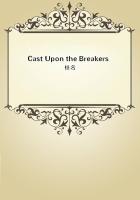Corresponding energy of rising air is not sufficient at four miles per hour. This amounts to but 2.10 foot pounds per second, but if we assume that the air was rising at the rate of seven miles per hour (10.26 feet per second), at which the pressure with the Langley coefficient would be 0.16 pounds per square foot, we have on 4.57 square feet for energy of rising air: 4.57 X 0.16 X 10.26 = 7.50foot pounds per second, which is seen to be still a little too small, but well within the limits of error, in view of the hollow shape of the bird's wings, which receive greater pressure than the flat planes experimented upon by Langley.
These computations were chiefly made in January, 1899, and were communicated to a few friends, who found no fallacy in them, but thought that few aviators would understand them if published. They were then submitted to Professor C. F. Marvin of the Weather Bureau, who is well known as a skillful physicist and mathematician.
He wrote that they were, theoretically, entirely sound and quantitatively, probably, as accurate as the present state of the measurements of wind pressures permitted.
The writer determined, however, to withhold publication until the feat of soaring flight had been performed by man, partly because he believed that, to ensure safety, it would be necessary that the machine should be equipped with a motor in order to supplement any deficiency in wind force.
Conditions Unfavorable for Wrights.
The feat would have been attempted in 1902 by Wright brothers if the local circumstances had been more favorable.
They were experimenting on "Kill Devil Hill,"near Kitty Hawk, N. C. This sand hill, about 100 feet high, is bordered by a smooth beach on the side whence come the sea breezes, but has marshy ground at the back.
Wright brothers were apprehensive that if they rose on the ascending current of air at the front and began to circle like the birds, they might be carried by the descending current past the back of the hill and land in the marsh. Their gliding machine offered no greater head resistance in proportion than the buzzard, and their gliding angles of descent are practically as favorable, but the birds performed higher up in the air than they.
Langley's Idea of Aviation.
Professor Langley said in concluding his paper upon "The Internal Work of the Wind":
"The final application of these principles to the art of aerodromics seems, then, to be, that while it is not likely that the perfected aerodrome will ever be able to dispense altogether with the ability to rely at intervals on some internal source of power, it will not be indispensable that this aerodrome of the future shall, in order to go any distance--even to circumnavigate the globe without alighting--need to carry a weight of fuel which would enable it to perform this journey under conditions analogous to those of a steamship, but that the fuel and weight need only be such as to enable it to take care of itself in exceptional moments of calm."Now that dynamic flying machines have been evolved and are being brought under control, it seems to be worth while to make these computations and the succeeding explanations known, so that some bold man will attempt the feat of soaring like a bird. The theory underlying the performance in a rising wind is not new, it has been suggested by Penaud and others, but it has attracted little attention because the exact data and the maneuvers required were not known and the feat had not yet been performed by a man. The puzzle has always been to account for the observed act in very light winds, and it is hoped that by the present selection of the most difficult case to explain--i. e., the soaring in a dead horizontal calm--somebody will attempt the exploit.
Requisites for Soaring Flights.
The following are deemed to be the requisites and maneuvers to master the secrets of soaring flight:
1st--Develop a dynamic flying machine weighing about one pound per square foot of area, with stable equilibrium and under perfect control, capable of gliding by gravity at angles of one in ten (5 3/4 degrees) in still air.
2nd.--Select locations where soaring birds abound and occasions where rising trends of gentle winds are frequent and to be relied on.
3rd.--Obtain an initial velocity of at least 25 feet per second before attempting to soar.
4th.--So locate the center of gravity that the apparatus shall assume a negative angle, fore and aft, of about 3 degrees.
Calculations show, however, that sufficient propelling force may still exist at 0 degrees, but disappears entirely at +4 degrees.
5th.--Circle like the bird. Simultaneously with the steering, incline the apparatus to the side toward which it is desired to turn, so that the centrifugal force shall be balanced by the centripetal force. The amount of the required inclination depends upon the speed and on the radius of the circle swept over.
6th.--Rise spirally like the bird. Steer with the horizontal rudder, so as to descend slightly when going with the wind and to ascend when going against the wind. The bird circles over one spot because the rising trends of wind are generally confined to small areas or local chimneys, as pointed out by Sir H. Maxim and others.
7th.--Once altitude is gained, progress may be made in any direction by gliding downward by gravity.
The bird's flying apparatus and skill are as yet infinitely superior to those of man, but there are indications that within a few years the latter may evolve more accurately proportioned apparatus and obtain absolute control over it.
It is hoped, therefore, that if there be found no radical error in the above computations, they will carry the conviction that soaring flight is not inaccessible to man, as it promises great economies of motive power in favorable localities of rising winds.
The writer will be grateful to experts who may point out any mistake committed in data or calculations, and will furnish additional information to any aviator who may wish to attempt the feat of soaring.















